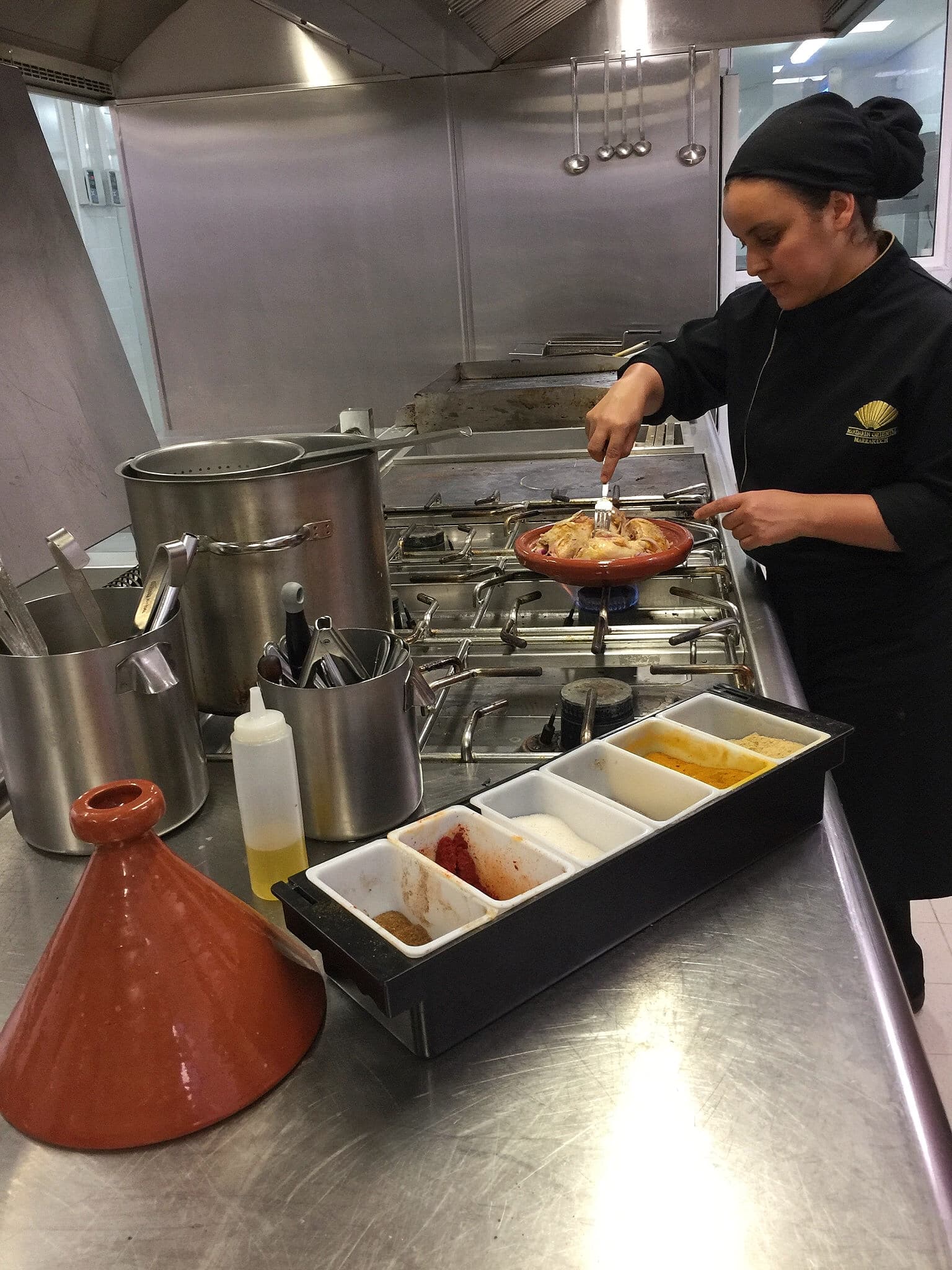
Food culture education at Mandarin Oriental Marrakech
Mandarin Oriental, Marrakech: Moroccan Cooking Class ExperienceCulinary Delights
History and culture of a city can be learned through landmarks and locals. My favorite way is through its food.
The best food education in the kitchen.
At Mandarin Oriental, Marrakech cooking classes are offered to learn about Moroccan cuisine from highly-trained local chefs.
The Culinary Delights program (for 1,000 Moroccan Dirham per person; about $100 USD) privileges guests to learn the recipes and techniques of some of the country’s most notable dishes which are beautifully rustic, colorful, and complex.
From the ingredients, preparation, and tastes you will learn about the Moroccan history and culture. The flavors have widespread influences from the East, African, and Andalusian traditions.
Moroccan Cooking Class Experience
Upon greeting the chef at the main reception, you are then escorted to the Mes’Lalla, the resort’s modern Moroccan restaurant. Then you are taken directly into the kitchen doors.
The Mes’Lalla kitchen is in full swing in the afternoon to prepare for dinner. From the brief walk through, you can see all the pots, pans, and tagines ready for the night.
You then enter an elevator and head down to the basement where the resort’s main prep kitchens are located. Welcome to your classroom for the morning or afternoon.
First, you are instructed to wash hands and put on an apron and chef’s hat, both of which you get to keep as souvenirs at the end of the class.
The head chef or local Moroccan chef will explain the menu for the day, which includes the most famous and popular dishes that formulate a classic Moroccan meal.
The Recipes
Taktouka and Zaalouk d’aubergines start the lesson. A Moroccan meal typically begins with several small plates of salads. These two dishes, in particular, accompany a chicken dish. Hence, the main dish for the class is Tagine de poulet aux citrons confit et olive du pays.
Taktouka is a popular traditional salad made of tomatoes and roasted peppers. This salad is not raw, rather it is cooked with spices and then cooled to serve room temperature or chilled.
Zaalouk d’aubergines is a common side dish and one of the most basic salads of Moroccan cuisine. The dish consists of cooking tomatoes and roasted eggplants with spices, and it is accompaned with bread.
Tagine de poulet aux citrons confit et olive du pays is a well-known Moroccan classic. The chicken is cooked in a tagine with citron confit (salt-cured lemons) and finished with the addition of olives. The lemons produce a wonderful complexity of flavors that are fragrant, sweet, savory, and bitter.
The design of the tagine brilliantly creates moisture which drips down the inside slope to tenderize the protein in the dish which slowly simmers to infuse all the flavors.
Moroccan dishes require patience with all the steps and techniques of cooking, as well as the patience for the slow cooking which produces deep flavors that are the signatures of the cuisine.
At the end of the class, you must have this recently learned patience of a Moroccan chef and wait for your meal to completely cook. It takes at least another hour or so, more like two hours, for the chicken to fully tenderize in its low heat.
Tasting the Dishes
The chef and staff give you the option if you want to enjoy the creations of your lesson in the restaurant or in your villa. The resort prides themselves with their stand out presentation and service in their In-Villa Dining program, which must be experienced at least once during your stay.
The next post features the dishes prepared in our Culinary Delights class and how it was beautifully presented and served in our pool villa.












Mandarin Oriental, Marrakech
Route de Golf Royal, 40 000
Marrakech, Morocco
+212-5-24-29-88-88
Book your stay via Agoda
Book your stay via Booking.com
Book your stay via Hotels.com
Book your stay via TripAdvisor
Disclaimer: This article contains affiliate links to hotel booking sites. With no additional cost to you, your bookings earn me a commission if you click on the links via my website – Thank you!
Sign up for my newsletter on the sidebar for blog updates and my travel insider tips! And, check out my vlogs on YouTube!


